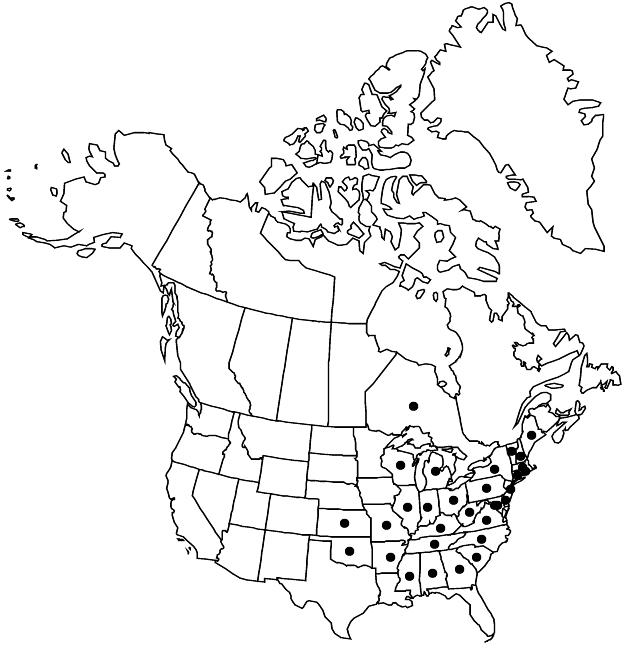Vaccinium pallidum
Hort. Kew. 2: 10. 1789 ,.
Shrubs, erect, (3–) 4–12 (–40) dm, rhizomatous, (twigs of previous year not verrucose). Leaves persistent. Inflorescences terminal, racemes, on lateral twigs, on previous year’s shoots or older woody stems. Pedicels articulated with calyx-tube. Flowers: sepals 5; petals 4–5, connate for nearly their entire lengths, corolla cylindric or urceolate; stamens 10, included; anthers ± without awns, tubules 1–1.5 mm, with terminal pores. Berries [4-], 5-locular, [pseudo 8-locular, or pseudo 10] -locular. Seeds 10–25, (ca. 1 mm).
Phenology: Flowering mid-late spring.
Habitat: Dry, open oak or oak- hickory woods, open pine woods, ledges, abandoned farmland or cut-over deciduous forests
Elevation: 0-1600 m
Distribution

Ont., Ala., Ark., Conn., Del., D.C., Ga., Ill., Ind., Kans., Ky., Maine, Md., Mass., Mich., Miss., Mo., N.H., N.J., N.Y., N.C., Ohio, Okla., Pa., R.I., S.C., Tenn., Vt., Va., W.Va., Wis.
Discussion
The flowers of Vaccinium pallidum are visited primarily by Andrena carlini Cockerell and Bombus spp. This species occasionally hybridizes with V. angustifolium, yielding V. ×dobbinii Burnham.
Selected References
None.
Lower Taxa
"entire" is not a number."dm" is not declared as a valid unit of measurement for this property.